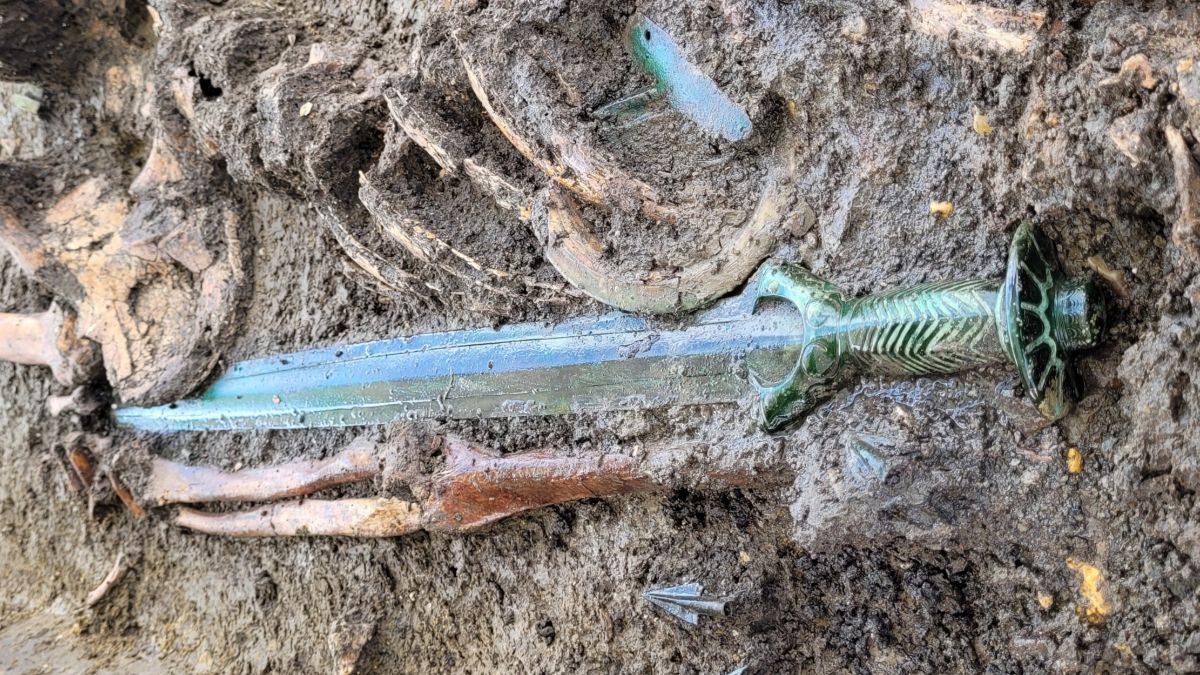The European continent has a history of civilisations that once resided in the area. Recently, a group of archaeologists found a bronze weapon during an excavation in Donau-Ries, Germany. According to them, the sword was dating back 3000 years and was well-preserved. Here are the details of this bronze sword found at the burial site.
A Bronze Sword Found At A Burial Site In Germany!
New discovery: an exceptionally well-preserved 3,000 years old bronze sword unearthed during excavations in Nördlingen.
The sword of the Achtkantschwert type (“octagonal sword” – due to the shape of the hilt) was found in a burial, dating late 14th c. BChttps://t.co/1rjkz4Ug7D pic.twitter.com/fE5gxfoGQ7— Nina Willburger (@DrNWillburger) June 15, 2023
While doing excavations in Nördlingen, archaeologists found a unique discovery. A bronze sword that was discovered is over 3000 years old and is in such amazing condition that it practically still sparkles. It is an example of a full-hilted bronze sword, which has an all-bronze octagonal hilt (octagonal sword type).
It is tentatively dated to the end of the Middle Bronze Age, around the 14th century BC. Rare sword discoveries from this period occur from either single, presumably sacrificial finds or from burial mounds that were purposefully opened in the nineteenth century.
The sword that has just been found came from a grave where three individuals with valuable bronze gifts were interred quickly after one another: a man, a lady, and a young person. It is still unclear if the people were related, and if so, how.
Also Read: Excavation At The Ancient City Of Abydos In Egypt Unearths 2,000 Mummified Ram Heads & More
Octagonal Swords And Their Making-Process

Octagonal swords are difficult to make because the handle is cast over the blade (a process known as overlay casting). With the use of hallmarks and an inlay, the embellishment is created. While there are two actual rivets, there is just an implied third pair. It is safe to believe that it was a legitimate weapon despite the manufacturing effort and lack of damage. A balance that favours slashing is indicated by the blade’s centre of gravity at the front portion.
The southern German region, as well as northern Germany and Denmark, are the main distribution hubs for octagonal swords. Comparing the casting methods and the artwork reveals that while some of the octagonal swords in the North may be genuine imports or the work of “wandering craftsmen,” others may be copies of South German designs.
Also Read: 4000-Year Old Craft Village Discovered During Excavation Near Varanasi
According to general curator Prof. Mathias Pfeil, the sword and burial site have been examined closely. He further stated that the preservation technique is excellent and it is a rare find.
Cover Image Courtesy: Nina Willburger/ Twitter
First Published: June 19, 2023 6:47 PM



